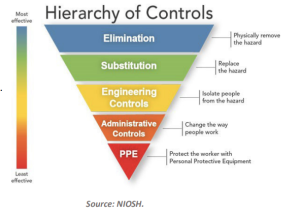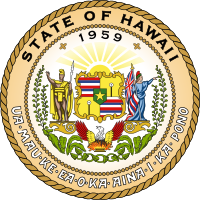Job Hazard Analysis
Purpose
One of the “root causes” of workplace injuries, illnesses, and incidents is the failure to identify or recognize hazards that are present, or that could have been anticipated.
A Job Hazard Analysis (JHA) is both a tool and a process of identifying and evaluating potential hazards or risks associated with a particular job or task. It involves breaking down a job into its individual steps and analyzing each step to identify potential hazards that could cause injury or illness to workers and the controls to mitigate the hazards. JHA are sometimes called “task hazard analyses.”
To identify and assess hazards, employers and workers:
- Collect and review information about the hazards present or likely to be present in the workplace.
- Conduct initial and periodic workplace inspections of the workplace to identify new or recurring hazards.
- Investigate injuries, illnesses, incidents, and close calls/near misses to determine the underlying hazards, their causes, and safety and health program shortcomings.
- Group similar incidents and identify trends in injuries, illnesses, and hazards reported.
- Consider hazards associated with emergency or nonroutine situations.
- Determine the severity and likelihood of incidents that could result for each hazard identified, and use this information to prioritize corrective actions.
Frequently Asked Questions (FAQs)
What is a job hazard analysis (JHA)?
It’s a procedure that helps to integrate acceptable safety and health principles and practices into a particular operation. It is based on the idea that safety is an integral part of every job– not a separate entity. JHA’s are sometimes called “task hazard analyses”
How do JHA’s improve safety and reduce injuries and illnesses?
By doing an analysis of particular jobs, previously undetected hazards might be identified. The systematic, four-step, analysis process leads to increased job knowledge, hazard awareness, communication between workers and supervisors, and acceptance of safe work practices.
What are the steps?
At its core, (1) Select the job tasks to be analyzed, (2) Break the job down into a sequence of steps, (3) Identify hazards, (4) Determine preventative measures to overcome the hazards. There are many types of ways to approach, OSHA.gov provides a more comprehensive breakdown.
How do I select the job for JHA?
Ideally, all jobs should be subjected to a JHA. However, due to practical constraints, the most critical jobs should be examined first. Factors to consider: (1) Accident frequency and severity. (2) Potential for severe injuries and illnesses. (3) New jobs– hazards may not be evident or anticipated. (4) Modified jobs– new hazards associated with changes. (5) Infrequently performed jobs–non-routine jobs often put workers at greater risk.
How do I break the job into “basic steps”?
This part of the JHA is best prepared by watching a worker doing the job. A rule of thumb is that most jobs can be described in less than ten steps. If more steps are required, you might combine steps if appropriate, or divide the job into two segments, with separate JHA’s. Steps are recorded in sequence, and begin with an action verb, i.e., “Park vehicle” and “Remove spare and tool kit”.
How do I identify hazards?
Each basic step may have associated hazards. These can be determined by observation, knowledge of accident and injury causes, personal experience, etc. The best way to identify hazards is to observe a worker who is experienced and capable in all aspects of the job. Often, multiple observations may be needed. Use questions to help identify hazards, i.e.; can parts of the body get caught in or between…; can the worker slip, trip, or fall; is there a danger from falling objects, etc.?
How do I determine preventive measures?
Consider the hierarchy of controls. It is a method of identifying and ranking safeguards to protect workers from hazards. These methods are arranged from the most to least effective.
(1) Eliminating the hazard through engineering, i.e., increasing ventilation, or substitution, i.e., less hazardous substance or changing equipment or tools. (2) Containing the hazard with enclosures, guards, booths, etc. (3) Administrative measures, such as revising work procedures, i.e., changing the sequence of steps or adding steps, such as lockout/tagout. (4) Personal Protective Equipment may be the least effective control measure, and should be used only if no other solutions are possible.

How do I communicate the JHA information to everyone affected?
Communicate the preventative measures or new/modified procedures which are associated with each step in the job. For more information view OSHA’s Hazard Identification.
Resources
- JHA Template (PDF)
- JHA Sample (PDF)
- OSHA Job Hazard Analysis Publication (OSHA 3071) (PDF)
- OSHA Hierarchy of Controls (PDF)
- OSHA Recommended Practices for Safety and Health Programs

